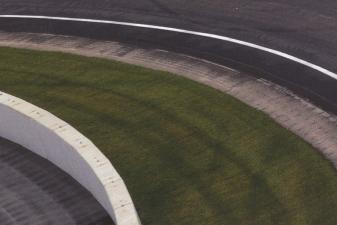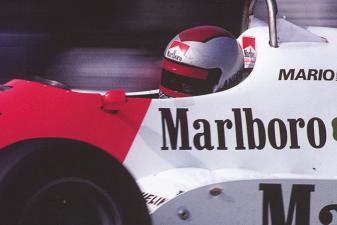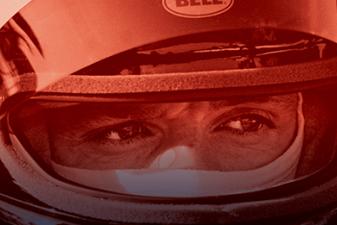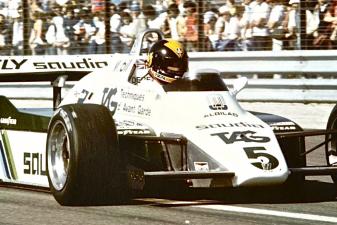Water in the Fuel
The Strange Story of the 24 Hours of Daytona in 1976

The following is an excerpt from the book, IMSA: 1969-1989, by Mitch Bishop and Mark Raffauf.
The 1976 24 Hours of Daytona was a race plagued by unusual and unforeseen circumstances that stalled much of the 72 car field and brought the race to a grinding halt for almost three hours. Find this and more behind-the-scenes stories in the book! (Banner image photo credit: The winning BMW CSL of Brian Redman and Peter Gregg at the 1976 24 Hours of Daytona. Photo credit: autosportsltd .com)
The 1976 24 Hours of Daytona was possibly the most unusual Camel GT race ever run. A record 72 entries showed up and the event had a relatively normal first 15 hours. After racing through the night, the BMW CSL of Peter Gregg and Brian Redman held an enormous 17-lap lead as the sun came up Sunday morning. But when Redman stopped for fuel and tires just after 9:00 a.m., the car misfired and then stalled coming out of the pits. Stranded out on the course, Redman tried to get the car re-fired, to no avail. He eventually borrowed jumper cables and a battery from some helpful fans beside the track and somehow managed to coax the BMW back to life and limped back to the pits. In the meantime, nine of the top ten cars in the race began to suffer the same symptoms, they were coughing and coming to a halt after refueling. The culprit? Water in the gasoline.
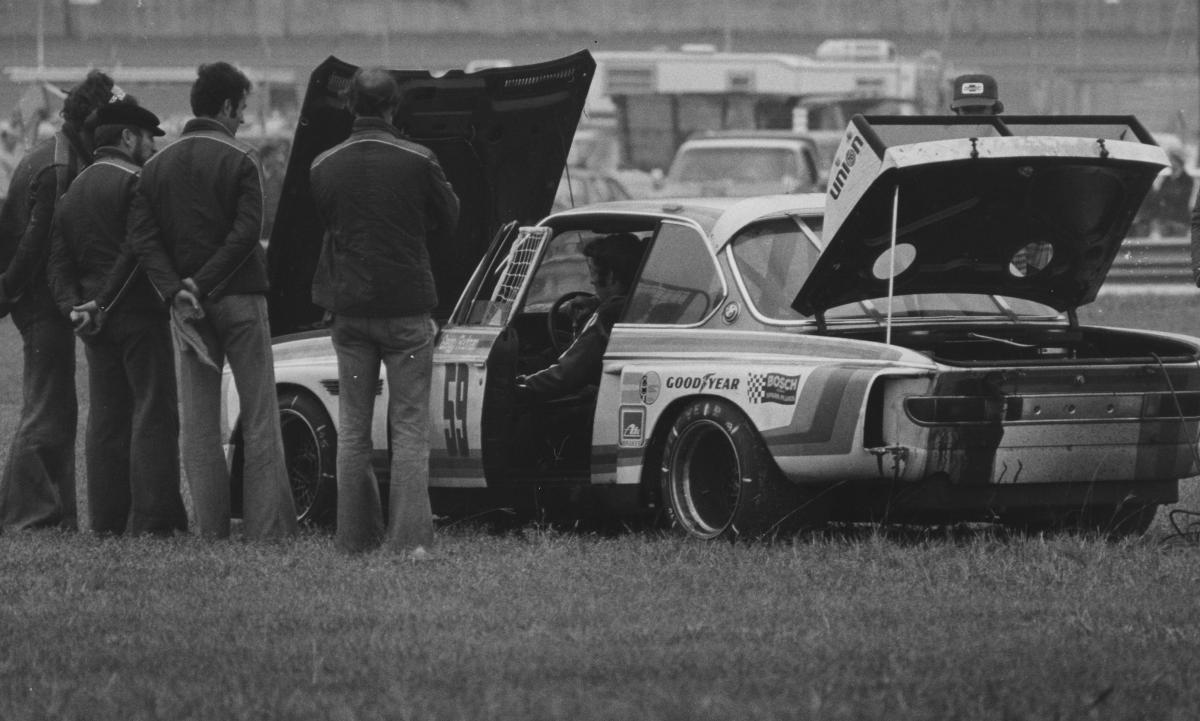 Brian Redman’s stricken BMW CSL during the 1976 24 Hours of Daytona, after stalling out on course with water tainted gasoline. Redman is trying to get it restarted with coaching from his crew, who were not allowed to touch the car. Photo credit: ISC Archives & Research Center/Getty Image
Brian Redman’s stricken BMW CSL during the 1976 24 Hours of Daytona, after stalling out on course with water tainted gasoline. Redman is trying to get it restarted with coaching from his crew, who were not allowed to touch the car. Photo credit: ISC Archives & Research Center/Getty Image
The decision was made to red flag the race an hour after the problems first started appearing; IMSA wanted to avoid having the entire field suffer the same fate. After some investigation, it was determined that the affected teams had all been serviced by a single gasoline truck. Somehow, water had been introduced into the fuel carried by that one truck.
John Bishop conferred with Chief Steward Charlie Rainville and the decision was made to roll back timing and scoring to the last complete lap before the problem first emerged at 9:01 a.m. on Sunday morning. That call was cheered by some teams and derided by others, depending on whether their car had been felled by the bad fuel or not.
As John later recalled: “Rolling back scoring of the race seemed like the only fair thing to do. Some of the teams that had dodged the bad fuel issue were upset, but you have to remember that this was an extraordinary, unprecedented situation that was out of the control of even the most well-prepared teams or the track.”
By the time a replacement truck with fuel arrived from Jacksonville, 90 miles away, two and a half hours had elapsed. Normally, teams were not allowed to work on their cars under red flag conditions, but in this case IMSA officials told everyone they could use the time to purge their fuel systems to get running again. Those with foam-filled fuel cells were doomed, however, because the water had been absorbed into the lining of the cell.
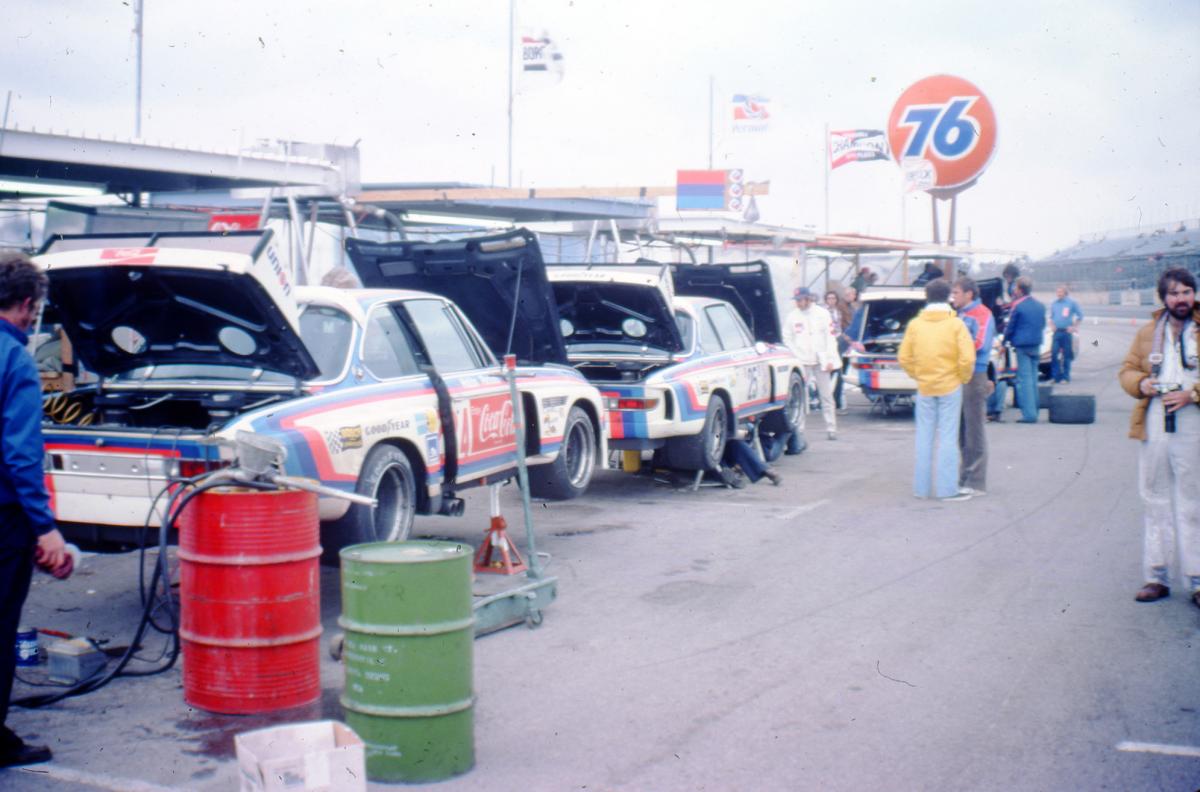 The BMW teams are serviced in the pit lane at Daytona in 1976 after the 24 hour race was red flagged. Teams were allowed to work on their cars to purge their fuel tanks, which had become contaminated with water. Red and green barrels were used to indicate which contained “good” and “bad” fuel. Photo credit: autosportsltd .com
The BMW teams are serviced in the pit lane at Daytona in 1976 after the 24 hour race was red flagged. Teams were allowed to work on their cars to purge their fuel tanks, which had become contaminated with water. Red and green barrels were used to indicate which contained “good” and “bad” fuel. Photo credit: autosportsltd .com
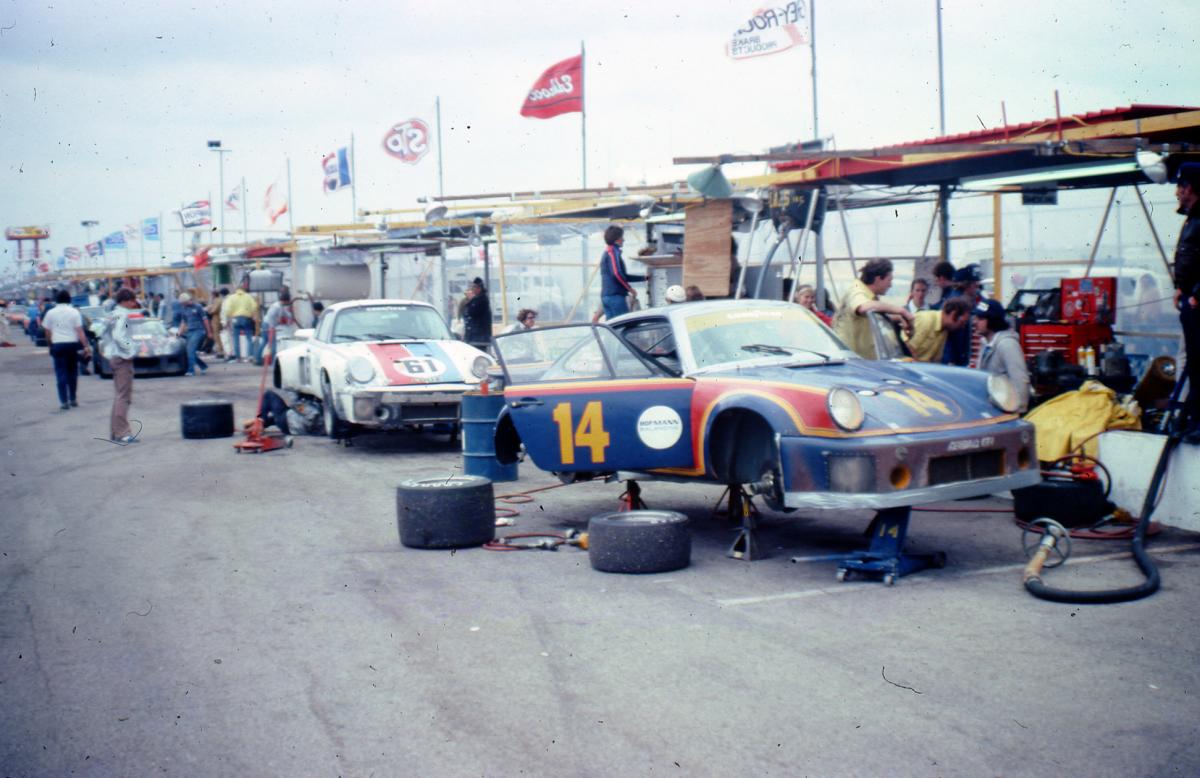 The #14 Al Holbert/Claude Ballot-Lena Porsche Carrera RSR is serviced during the lengthy red flag due to water contaminated gasoline during the 24 Hours of Daytona in 1976. The pair would go on to finish second in the race. Photo credit: autosportsltd .com
The #14 Al Holbert/Claude Ballot-Lena Porsche Carrera RSR is serviced during the lengthy red flag due to water contaminated gasoline during the 24 Hours of Daytona in 1976. The pair would go on to finish second in the race. Photo credit: autosportsltd .com
Once their fuel system had been cleaned, Redman and Gregg resumed the race with their 17-lap lead intact, almost three hours after the race had been red flagged and almost four hours since the last officially scored lap. Just 29 cars restarted the race, the rest having fallen out prior to the fuel issue or having been done in by the tainted gasoline. The duo of Redman and Gregg went on to win by 14 laps over Al Holbert and Claude Ballot-Lena in a Carrera RSR. It would be the third 24 Hours of Daytona victory for Gregg.
Keep an eye out for our upcoming book, IMSA: 1969-1989 by Mitch Bishop and Mark Raffauf, and stay tuned for our next blogpost excerpt, coming October 3.
The 1976 24 Hours of Daytona was possibly the most unusual Camel GT race ever run. A record 72 entries showed up and the event had a relatively normal first 15 hours. After racing through the night, the BMW CSL of Peter Gregg and Brian Redman held an enormous 17-lap lead as the sun came up Sunday morning. But when Redman stopped for fuel and tires just after 9:00 a.m., the car misfired and then stalled coming out of the pits. Stranded out on the course, Redman tried to get the car re-fired, to no avail. He eventually borrowed jumper cables and a battery from some helpful fans beside the track and somehow managed to coax the BMW back to life and limped back to the pits. In the meantime, nine of the top ten cars in the race began to suffer the same symptoms, they were coughing and coming to a halt after refueling. The culprit? Water in the gasoline.
 Brian Redman’s stricken BMW CSL during the 1976 24 Hours of Daytona, after stalling out on course with water tainted gasoline. Redman is trying to get it restarted with coaching from his crew, who were not allowed to touch the car. Photo credit: ISC Archives & Research Center/Getty Image
Brian Redman’s stricken BMW CSL during the 1976 24 Hours of Daytona, after stalling out on course with water tainted gasoline. Redman is trying to get it restarted with coaching from his crew, who were not allowed to touch the car. Photo credit: ISC Archives & Research Center/Getty ImageThe decision was made to red flag the race an hour after the problems first started appearing; IMSA wanted to avoid having the entire field suffer the same fate. After some investigation, it was determined that the affected teams had all been serviced by a single gasoline truck. Somehow, water had been introduced into the fuel carried by that one truck.
John Bishop conferred with Chief Steward Charlie Rainville and the decision was made to roll back timing and scoring to the last complete lap before the problem first emerged at 9:01 a.m. on Sunday morning. That call was cheered by some teams and derided by others, depending on whether their car had been felled by the bad fuel or not.
As John later recalled: “Rolling back scoring of the race seemed like the only fair thing to do. Some of the teams that had dodged the bad fuel issue were upset, but you have to remember that this was an extraordinary, unprecedented situation that was out of the control of even the most well-prepared teams or the track.”
By the time a replacement truck with fuel arrived from Jacksonville, 90 miles away, two and a half hours had elapsed. Normally, teams were not allowed to work on their cars under red flag conditions, but in this case IMSA officials told everyone they could use the time to purge their fuel systems to get running again. Those with foam-filled fuel cells were doomed, however, because the water had been absorbed into the lining of the cell.
 The BMW teams are serviced in the pit lane at Daytona in 1976 after the 24 hour race was red flagged. Teams were allowed to work on their cars to purge their fuel tanks, which had become contaminated with water. Red and green barrels were used to indicate which contained “good” and “bad” fuel. Photo credit: autosportsltd .com
The BMW teams are serviced in the pit lane at Daytona in 1976 after the 24 hour race was red flagged. Teams were allowed to work on their cars to purge their fuel tanks, which had become contaminated with water. Red and green barrels were used to indicate which contained “good” and “bad” fuel. Photo credit: autosportsltd .com The #14 Al Holbert/Claude Ballot-Lena Porsche Carrera RSR is serviced during the lengthy red flag due to water contaminated gasoline during the 24 Hours of Daytona in 1976. The pair would go on to finish second in the race. Photo credit: autosportsltd .com
The #14 Al Holbert/Claude Ballot-Lena Porsche Carrera RSR is serviced during the lengthy red flag due to water contaminated gasoline during the 24 Hours of Daytona in 1976. The pair would go on to finish second in the race. Photo credit: autosportsltd .comOnce their fuel system had been cleaned, Redman and Gregg resumed the race with their 17-lap lead intact, almost three hours after the race had been red flagged and almost four hours since the last officially scored lap. Just 29 cars restarted the race, the rest having fallen out prior to the fuel issue or having been done in by the tainted gasoline. The duo of Redman and Gregg went on to win by 14 laps over Al Holbert and Claude Ballot-Lena in a Carrera RSR. It would be the third 24 Hours of Daytona victory for Gregg.
Keep an eye out for our upcoming book, IMSA: 1969-1989 by Mitch Bishop and Mark Raffauf, and stay tuned for our next blogpost excerpt, coming October 3.


